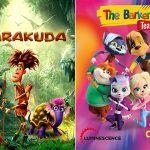Media and broadcast executives discussed the challenges of adopting subscription models in the Middle East at the region’s largest satellite, broadcast and media event.
CABSAT featured insights from some of the world’s biggest names in social media, as well as panel discussions on the role of subscription models in the region’s media realm and the importance of creating original children’s content.
Social media giants to focus on content creators going forward
A panel discussion at CABSAT’s Content Congress saw Kinda Ibrahim, Twitter’s Director of Content Partnerships for the Middle East and Africa, and Moon Baz, Meta’s Creator Partnerships Lead for the Middle East, Africa, and Turkey, discuss the creator economy boom and the role of social media. Both experts revealed their respective platforms are shifting focus to content creators, an economy valuing USD100 bn.
Speaking of younger generations, Ibrahim said: “Millennials are cutting cords: Both Gen Z and Alpha are not mobile first, but rather mobile only. Not only in terms of consumption, but also creation. With only a mobile phone, they can create very engaging content. It’s more relatable, authentic, and relevant – which translates as more eyeballs and, for brands, is more relatable to potential customers.”
Baz noted that video now makes up 50 per cent of users’ time spent on Facebook and 20 per cent of time spent on Instagram, adding: “We haven’t focused too much on creators in the past, but this is now where we are focusing. Our investment in Facebook Watch and Reels underlines our commitment to creators and while we already have monetisation tools – ads, subscriptions, paid online events, etc – we are now testing a Reels Bonus Programme in the US as part of a US$1bn investment. It will, in time, be rolled out worldwide.”
Linear TV in news of the future
In another discussion, news creators discussed the challenges of adopting subscription models in the Gulf and how such models impact revenues on linear TV platforms. Riad Hamade, Director of Business News at Asharq Business with Bloomberg, identified credibility as a barrier for news outlets in the region to make the jump behind a paywall.
“Most of us haven’t built up the credibility yet – it will take us time,” he said. “When you look at examples of established western media outlets, such as The New York Times, Wall Street Journal, or Bloomberg, they are successful with their subscription packages, but that’s after they have built their credibility – the foundation of journalism and news analysis. As Arab media outlets, we too have to offer something that is so good to make sure people do not question a subscription-based model.”
Taking into account revenues across platforms, Loubna Fawaz, Head of Content at CNBC Arabia’s TV and Digital division, opined that traditional TV still captures the lion’s share. “Our primary stream of income is coming from traditional TV,” she said. “We do understand our audience and we do cater to what their needs are; through that, we have built a relationship of trust with our viewers. At the same time, we are trying to diversify how we transmit content to cater to a new audience.”
Hamade agreed, adding: “Linear TV is still the most visible for us. However, we are looking at different revenue streams, including live events and our social media platforms, which are other forms of getting information out there. We have to accept that there isn’t just one way to reach people – we cannot just be a TV station, we cannot just be a website. We have invested a lot of money and we want to reach the young, specialist audience.”
Creating original hits for children is both challenging and hugely rewarding, say experts
Executives from studios producing children’s content discussed how certain themes and technologies are seeing continued gains when it comes to content creation, adding that successfully creating an original piece of intellectual property (IP) can mean more flexibility when deciding on how to monetise the characters beyond the screen.
Kamel Weiss, General Manager and Director of Business Development at Spacetoon TV, said: “The children’s content market is pretty underserved. You don’t see a lot of broadcasters focusing on creating that next blockbuster original. At Spacetoon, we don’t just broadcast content. We license as well as diversify into gaming as a way to bolster revenues and deliver more content to consumers. Originals are the best way to grow a brand and then monetise because of reduced red tape, [which is] a result of others not owning the IP.”
Mariam Al Serkal, Head of Majid Kids at Abu Dhabi Media, added: “It took us a while to grasp what makes content stand out. The beauty of children’s content is that it is very flexible and can be dubbed to many languages. We have taken the step of establishing our own in-house studios, which now employ a team of more than 40. This was a great move for us and helps us be nimbler with our original IPs.”
















































































